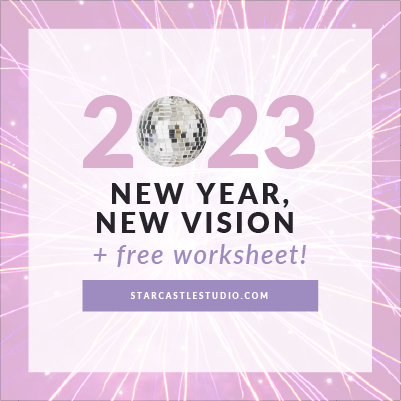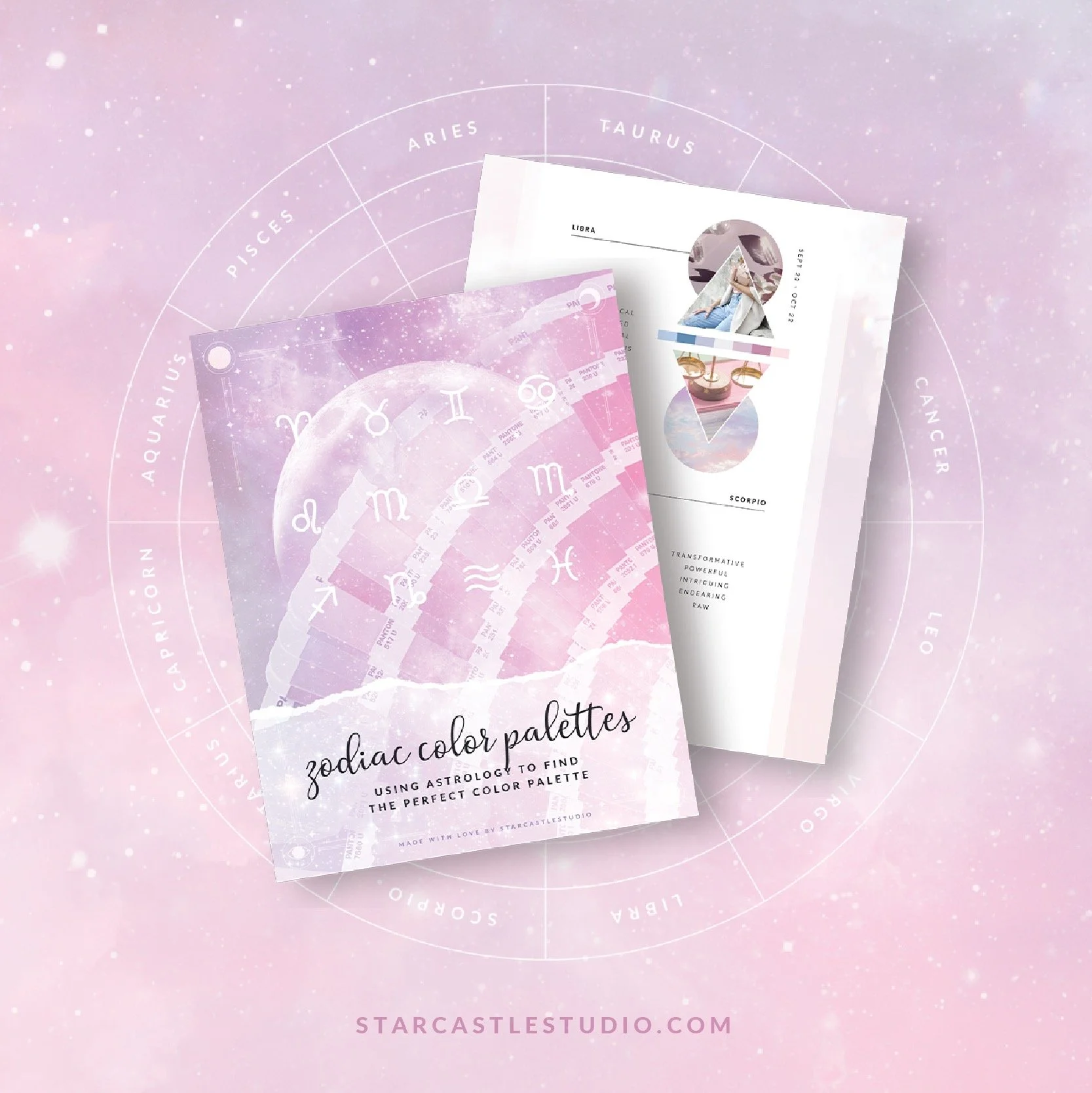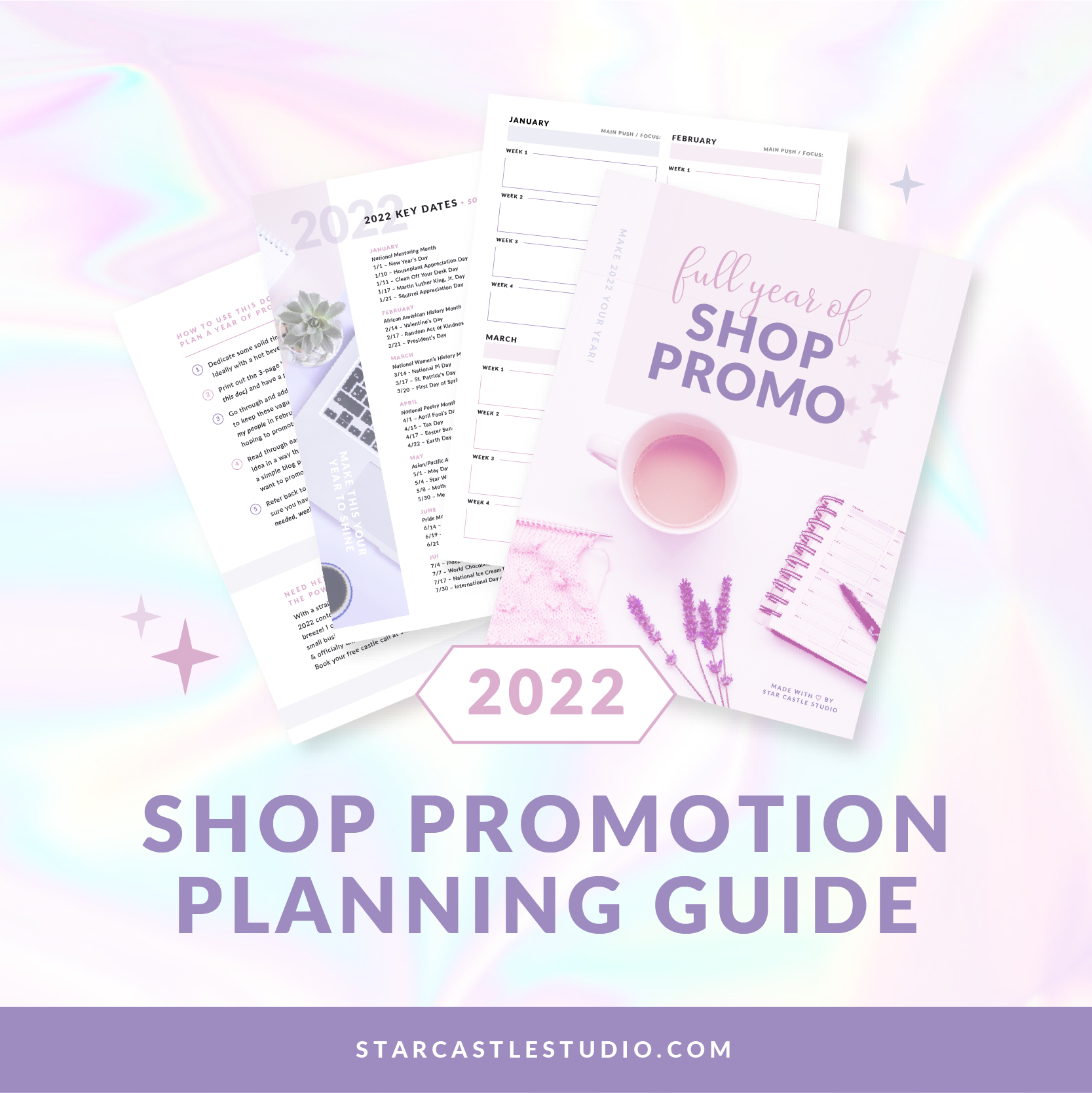Hacks for finding the Perfect Color Palette
Star Castle Studio provides soul-centered entrepreneurs with tips and custom-created visuals needed to beautifully run a professionally branded business and make an unforgettable impression online.
Color in branding
Color is a powerful secret language everyone intuitively understands but few know how to speak intentionally. As a designer, I use color every day to evoke emotion, complete designs and attract attention. Color directly impacts your psyche and thought process — meaning with a little intention, you can use particular colors to do or say particular things.
Okay, so now we know color is important, but how do you choose from the endless options?
Your brand’s color palette is a huge piece of the overarching look & feel of your business. Intentionally using colors can make your graphics really pop — i.e. standing out in a sea of muted earth tones (looking at you, farmhouse people). Choosing lesser used shades can help your brand stand out and get noticed in the increasingly crowded online space. The best color palette for your brand may notttt be your all-time favorite colors, but rather chosen to powerfully impact your audience.
For example, a neon green could be off-putting for a zen-style spa. It’s important to consider what each of your chosen hues will say about your business, and the overall vibe they create together.
The power of a palette
Color is a great tool for brand recognition — think about the last time you were in Home Depot and needed assistance. You look for the orange shirts! Their website, shelves, carts and signage… all orange. This color consistency creates a sense of assurance and familiarity, making you feel more connected and therefore engaged with the brand.
While your online brand may not have a storefront or employee uniforms, you can create this same sense of familiarity by simply choosing and sticking to a well curated color palette.
My favorite tools
My all-time favorite color tool is Kuler.
It’s free to use and hosts a wide array of uses. When you’re unsure of where to start with choosing a color palette this is a great first step. Using Kuler’s sesrch function, you’re able to search by keyword, theme or even adjective to see an inspiring collection of curated palettes.
For example, typing mystic into the search bar would deliver dreamy blues & purples while spring would yield soft pastels. Typing in the overarching mood/vibe you’re hoping to evoke and browse the usual color associations (which you can use to your advantage in your designs)!
Another great option is to use the palette from image feature!
You simply upload an image to Kuler and the program will pull 5 colors from it, creating a unique palette for you with exact hex codes and everything!! You can play with the individual shades and even copy them to your clipboard or save them to your color library (if you’re using adobe programs to create).
Pinterest palette hack
Unsure of what image to use for the image to palette tool? If you have an existing Pinterest inspiration board I have a little hack for you, that has worked wonders for my clients!
Go to the Pinterest board you’ve created for this project and zoom out as far as you can (till the images are barely recognizable). With this birds eye view, sometimes it becomes clear that one or two shades keep making regular appearances. If not, simply screenshot this little grid-like page and upload that screenshot into kuler’s image to palette tool! Now you’ve got your palette — based off the inspiration you already put together!
Secondary palette
While some LOVE having a set of pre-determined colors to choose from when creating new visuals, others may feel stifled by the limited palette. If you’d like some more room to play, explore adding a secondary palette to your brand. Maybe you use it for your most popular program, or a special annual event… the point is to use it in conjunction with your main color palette, rather than replacing it.
Color consistency
Once you have an established color palette for your brand, be sure to stick with it. That doesn’t mean always use ‘blue’. You exact same blue wherever your brand shows up online. In order to do this, you’ll need your hex codes at the ready. I recommend my clients print their brand board to keep for easy reference. That way, your exact shades will stay consistent each and every time— creating powerful consistency and an unforgettable impact.

















